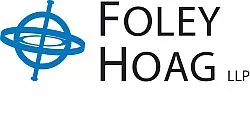- in United States
- within Media, Telecoms, IT and Entertainment topic(s)
In This Issue:
Hydrogen
The team at Foley Hoag has been keeping pace with the fast-moving world of clean hydrogen. In this issue, we collect several articles—including ones we've written—on the key legal, regulatory, and technical opportunities as well as the challenges facing clean hydrogen development in the United States.
Clean hydrogen could be a critical solution to addressing several hard-to-decarbonize sectors of the economy. It could be an essential component in zero- and low-carbon fuels for heavy-duty vehicles, airplanes, and maritime freighters. It could be used as a feedstock in fertilizer and other chemicals manufacturing, as well as in industrial processes requiring significant heating, such as steel manufacturing. And it could play a big role in long-duration energy storage and low-carbon electric power generation. It's no surprise, then, that many are calling clean hydrogen the "Swiss Army Knife" of climate solutions.
Clean hydrogen has woven its way into myriad federal policies. The Inflation Reduction Act (IRA) establishes a major tax credit for producing clean hydrogen—up to $3 per kilogram depending on the carbon intensity of the hydrogen production process. The Bipartisan Infrastructure Law likewise provides billions of dollars in funding to set up Hydrogen Hubs for the regionalized production, distribution, and use of clean hydrogen.
Certain federal agencies are starting to rely on the emerging hydrogen industry in their climate-related policies. EPA, for instance, has proposed two important climate rules that depend in part on clean hydrogen: a rule to cut power plant emissions that relies on hydrogen co-firing at certain natural gas plants and a rule addressing heavy-duty trucking emissions that supports pathways for heavy-duty vehicles that run on hydrogen. Both rules could be finalized by the end of this year.
States are also starting to weigh in. Colorado recently enacted its own hydrogen tax credit to complement the IRA credit. And California, Oregon, and Washington's low-carbon fuels programs could begin incorporating clean-hydrogen-derived fuels.
Yet many questions remain—questions that must be answered before the hydrogen economy can hit its stride. Perhaps the most significant question is, what counts as "qualified clean hydrogen" under the IRA? Treasury and IRS were meant to issue guidance on this topic (and others) last August. It now seems that the guidance could be delayed until late fall or winter. Department of Energy is also deciding which Hydrogen Hubs will receive funding and how it will structure a $1 billion fund intended to support hydrogen demand nationwide.
Foley Hoag will keep tracking these important issues and more. Be sure to stay tuned.
Read the full newsletter here.
Originally Published 20 September 2023
The content of this article is intended to provide a general guide to the subject matter. Specialist advice should be sought about your specific circumstances.






